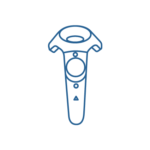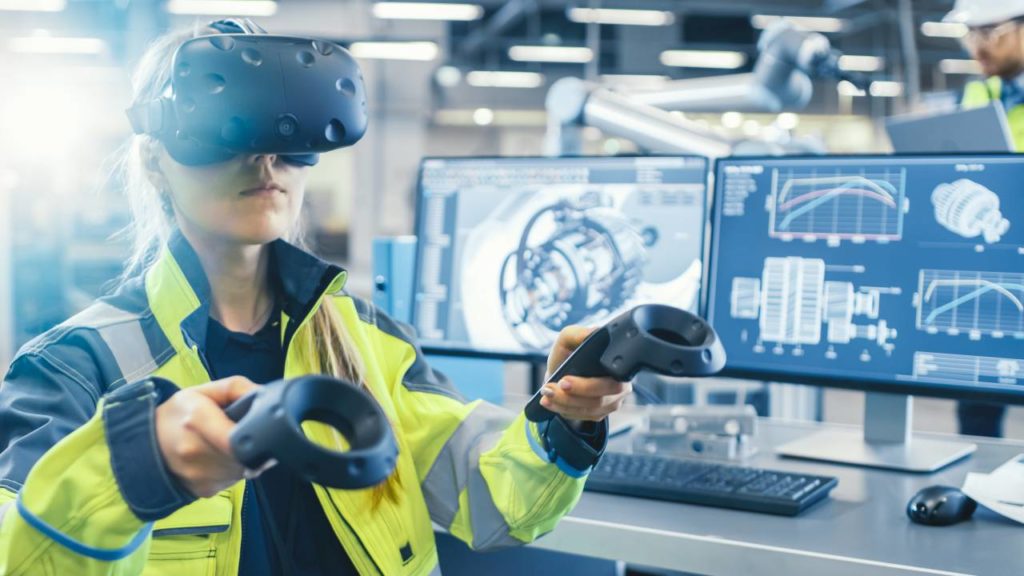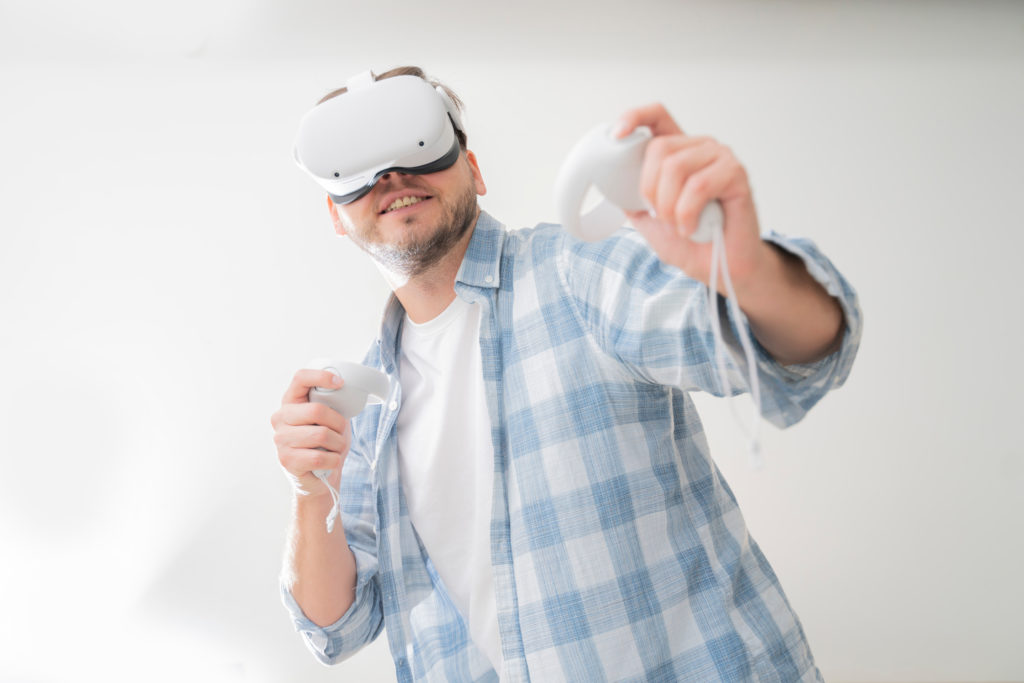
What is Virtual Reality?
Virtual reality refers to a digital reality generated by computer technology. With virtual reality (VR) glasses, the user is able to look around and interact with this digital world in real time.
The technical basis is always a pair of modern VR goggles,
which are equipped with two high-resolution displays and sensors for motion transmission.
All of the user’s movements are precisely transferred to the virtual world. From simple grasping, to body rotations, to walking or running: The user can move through the virtual world while walking. Virtual teleportation is used to overcome greater distances.
How does VR technology work?
What are the operating methods?

Controller
VR controllers are used for precise interaction with the environment.
Extensive interaction possibilities, such as gripping and using tools or interacting with machines and equipment of all kinds, are realised in this way.

Handtracking
Another control option is hand tracking, whereby the user interacts with the virtual world without a controller.
Here, the positions and movements of the hands are recognised by the cameras of the VR goggles and transmitted in real time.

Hardware integration
We bring your hardware into the
virtual world and integrate them into
your VR trainings. This way, your company benefits from the "muscle memory effect".
Your employees train with the real work equipment and experience maximum learning success due to the closeness to reality.
What VR systems are there?
Currently available VR systems can be divided into three categories: Mobile, fixed and non-fixed systems.
Which system is individually suitable depends on the area of use of the respective VR application. The usable room size is up to 100 m².

As permanently installed systems, the Oculus Rift and the HTC Vive are among the best-known solutions, always in conjunction with a powerful computer. Due to their cable connection, their use in specially equipped VR offices is recommended. External sensor systems are used for motion detection.
As a non-fixed system, the Oculus Rift S is a contemporary solution that can be operated with many powerful notebooks/laptops. A cable connection to the goggles also exists here, but the integrated motion detection of the VR goggles makes external sensor systems superfluous. Since only a notebook/laptop and VR goggles are required, battery operation is possible here, independent of the mains. The entire system is therefore more flexible and suitable for portable use.


Mobile systems like the Oculus Quest offer a full-fledged all-in-one solution.
The compact format makes it the ideal VR solution for portable use.
Due to the complete integration of computer and motion capture, wireless operation is possible, which assures the user maximum freedom of movement in any application environment. Mobile systems thus offer maximum flexibility in all VR application areas.
Examples of the use of VR
in industry
To learn more about how VR is successfully used in industry, take a look at our products.
How can I use VR in my company?
Virtual reality refers to a digital reality generated by computer technology. With virtual reality (VR) glasses, the user is able to look around and interact with this digital world in real time.
